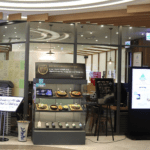📅 게시일: 2024년 03월 12일 | 🔄 수정일: 2025년 02월 10일
The Efficiency and Innovation of South Korea’s Public Transportation System
In an era where urban mobility defines the pace and quality of life, South Korea emerges as a beacon of innovation and efficiency in public transportation. Its system, a complex web of subways, buses, trains, and taxis, is more than just a network of moving parts; it’s the lifeblood of the nation’s bustling cities and sprawling countrysides. This exploration delves into the essence of South Korea’s transit system, revealing how it shapes the society, economy, and environment of this dynamic country.
A Legacy of Connectivity: The Historical Context
To appreciate the current state of South Korea’s public transportation, one must glance backward. The seeds were sown in the late 20th century, with the Seoul Subway’s inauguration in 1974 marking a pivotal moment. Since then, the network has burgeoned into one of the world’s most extensive and utilized systems, paralleled by the development of the Korea Train eXpress (KTX) and an intricate bus network.

The Seoul Subway Saga: A Blueprint of Brilliance
The Seoul Metropolitan Subway, a marvel of urban planning, boasts over 20 lines that intersect the capital and its suburbs, making it a global benchmark for subway systems. Noteworthy is its user-friendly interface, with real-time updates, multilingual services, and immaculate stations. Beyond its functionality, the subway serves as a cultural artery, displaying art installations and hosting performances, thus transforming commutes into cultural experiences.
Speed and Splendor: The KTX Phenomenon
The KTX, South Korea’s high-speed train, is a testament to the nation’s technological ambition. Since its launch in 2004, it has revolutionized intercity travel, making the country’s farthest corners accessible within hours. The KTX not only underscores South Korea’s engineering prowess but also its commitment to knitting the nation closer together, fostering economic growth and regional development.

Buses and Taxis: The Capillaries of Korean Transit
Complementing the high-speed and subway networks are buses and taxis, serving as the capillaries of South Korean transit. The bus system, with its color-coded routes, caters to both rapid intercity travel and intricate local networks. Taxis, omnipresent and reliable, offer a more personalized journey, integrating traditional services with modern apps to enhance accessibility and convenience.
The Digital Pulse: Technological Integration
A distinctive feature of South Korea’s public transportation is its symbiosis with technology. From the T-money card, a digital payment beacon, to smartphone apps providing exhaustive travel information, technology is the linchpin of this system’s success. These innovations not only streamline the user experience but also epitomize the country’s ethos of continuous improvement and digital integration.
Navigating Sustainability: Towards a Greener Transit
Sustainability stands at the core of South Korea’s transit philosophy. The transition towards electric buses and solar-powered subway stations reflects a broader commitment to reducing carbon footprints and combatting urban pollution. This green trajectory not only aligns with global environmental goals but also enhances the quality of life for South Korea’s urban dwellers.
The Cultural Fabric: Public Transportation as a Social Equalizer
Beyond its functional role, South Korea’s public transportation system is a social equalizer, blurring economic and social divides by providing affordable, efficient mobility to all. It fosters a sense of community and belonging, with shared spaces and experiences reinforcing societal norms and values. Moreover, it plays a pivotal role in the daily rituals of Koreans, influencing lifestyle patterns, urban design, and even pop culture.
Future Tracks: Innovations on the Horizon
Looking ahead, South Korea is not resting on its laurels. The country is at the forefront of pioneering autonomous vehicle technology, smart cities, and eco-friendly transport solutions. Projects like the expansion of the KTX network and the introduction of self-driving buses in pilot cities underscore a vision that is both progressive and pragmatic, aiming to sustainably scale the heights of urban mobility.
Challenges and Considerations: Balancing Growth and Inclusivity
Despite its accolades, South Korea’s public transportation system faces challenges, from ensuring equitable access across all demographics to maintaining infrastructure amidst rapid technological advancements. Addressing these concerns is crucial for preserving the system’s integrity and ensuring it remains a catalyst for economic development and social cohesion.
Conclusion: A Journey Beyond Transportation
South Korea’s public transportation system is more than a network of routes and schedules; it’s a testament to the country’s resilience, innovation, and vision for the future. As it evolves, it continues to embody the aspirations of a nation on the move, offering lessons in efficiency, sustainability, and inclusivity for the global community. In the fast-paced rhythm of Korean life, the public transportation system is not just about reaching destinations; it’s about shaping the journey of a nation towards a brighter, more connected tomorrow.










